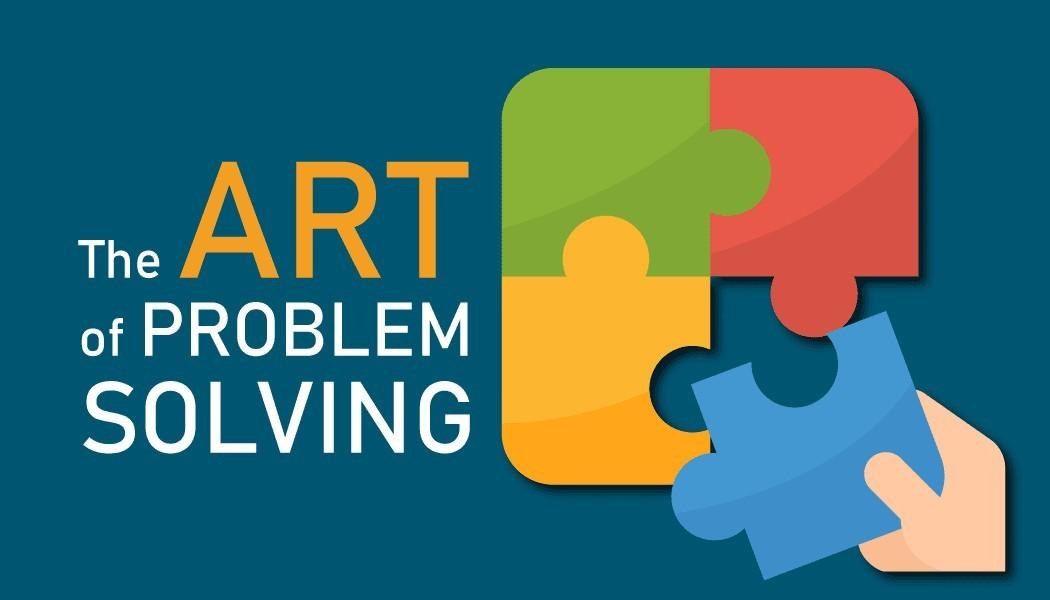The Art of Problem Solving: A Strategic Edge by Mu Sigma

In an increasingly complex and data-driven world, organizations are constantly confronted with evolving challenges. The ability to navigate ambiguity, think critically, and devise innovative solutions has become a fundamental differentiator in the business landscape. At the heart of this lies a crucial discipline: the art of problem solving. For Mu Sigma, a global leader in decision sciences and data analytics, this is more than a skill—it's a philosophy that drives its approach to transforming business decisions.
What is the Art of Problem Solving?
The art of problem solving refers to the systematic yet creative approach to identifying, analyzing, and resolving challenges. It encompasses critical thinking, logical reasoning, collaboration, and an openness to iterative learning. Unlike rigid methodologies, the art of problem solving embraces uncertainty and focuses on developing adaptive strategies that evolve with changing conditions.
At Mu Sigma, this philosophy is embedded in the organization’s DNA. The company empowers its people to act not just as analysts, but as problem solvers—individuals who understand context, appreciate nuance, and drive impact.
Why Problem Solving is a Core Competency in the Data Age
In today’s business environment, data is abundant but insights are rare. The ability to extract meaning from chaos is what sets leading companies apart. The art of problem solving enables organizations to:
-
Navigate ambiguity: Real-world problems are often ill-defined and multifaceted. Problem solvers can break these down into manageable components.
-
Foster innovation: Traditional approaches no longer guarantee success. Solvers look at problems from different angles, uncovering new possibilities.
-
Make data-driven decisions: Informed decision-making requires more than just data—it demands the right questions, context, and synthesis.
Mu Sigma’s work with Fortune 500 clients exemplifies how problem solving at scale can drive business transformation.
Mu Sigma’s Unique Approach to Problem Solving
What differentiates Mu Sigma is its proprietary Art of Problem Solving (AoPS) framework, which blends science, art, and scale to develop enterprise-wide problem-solving capabilities.
1. Science – Structured Thinking
Mu Sigma uses hypothesis-driven thinking and first-principles analysis to dissect problems. This involves breaking down problems into root causes, identifying key levers, and developing measurable KPIs. This structured approach ensures that the process remains grounded and replicable.
2. Art – Contextual and Creative Intelligence
Understanding the context is critical. Mu Sigma encourages its teams to consider business nuances, human behavior, and market dynamics. This creative layer brings empathy, intuition, and storytelling into the mix—elements often overlooked in data-centric environments.
3. Scale – Building Problem-Solving Systems
Solving one problem isn’t enough. Organizations need to create systems that continuously adapt to new challenges. Mu Sigma helps clients build decision support ecosystems powered by scalable models, reusable assets, and embedded learning mechanisms.
Training the Problem Solvers of Tomorrow
A core component of Mu Sigma’s success is its investment in talent development. The company has built a strong culture of learning through its in-house learning platform and immersive programs like the Mu Sigma University. These programs train fresh graduates in the art of problem solving, blending analytical rigor with real-world exposure.
Through rigorous training, individuals learn to:
-
Ask the right questions
-
Connect the dots across domains
-
Apply frameworks like the Decision Sciences Methodology (DSM)
-
Collaborate across disciplines
This prepares them to become full-stack problem solvers capable of driving business impact.
Real-World Impact: Problem Solving in Action
Mu Sigma’s problem-solving expertise has helped global clients across industries—from healthcare and retail to finance and manufacturing. Whether it's optimizing supply chains, personalizing customer experiences, or forecasting demand in uncertain markets, the company's solutions are grounded in the art of problem solving.
For example, a leading retailer worked with Mu Sigma to address fluctuating inventory levels across stores. By applying a problem-solving lens, the team identified root causes, redesigned the forecasting model, and implemented dynamic stock strategies—resulting in a 20% reduction in stockouts.
Conclusion: Mastering the Art of Problem Solving
In an age defined by complexity, the art of problem solving is not a luxury—it’s a necessity. Organizations that cultivate this mindset are better equipped to adapt, innovate, and thrive. At Mu Sigma, this art is more than a methodology—it’s a way of thinking, acting, and evolving.
By embedding the art of problem solving into its culture, Mu Sigma continues to help enterprises make better decisions at scale and speed. As business challenges grow more interconnected, the need for skilled problem solvers—armed with context, curiosity, and capability—will only increase.
Embrace the art. Solve with Mu Sigma.
- Vibnix Blog
- Politics
- News
- Liberia News
- Entertainment
- Technology
- Onderwijs
- Art
- Causes
- Crafts
- Dance
- Drinks
- Film
- Fitness
- Food
- Spellen
- Gardening
- Health
- Home
- Literature
- Music
- Networking
- Other
- Party
- Religion
- Shopping
- Sports
- Theater
- Wellness


